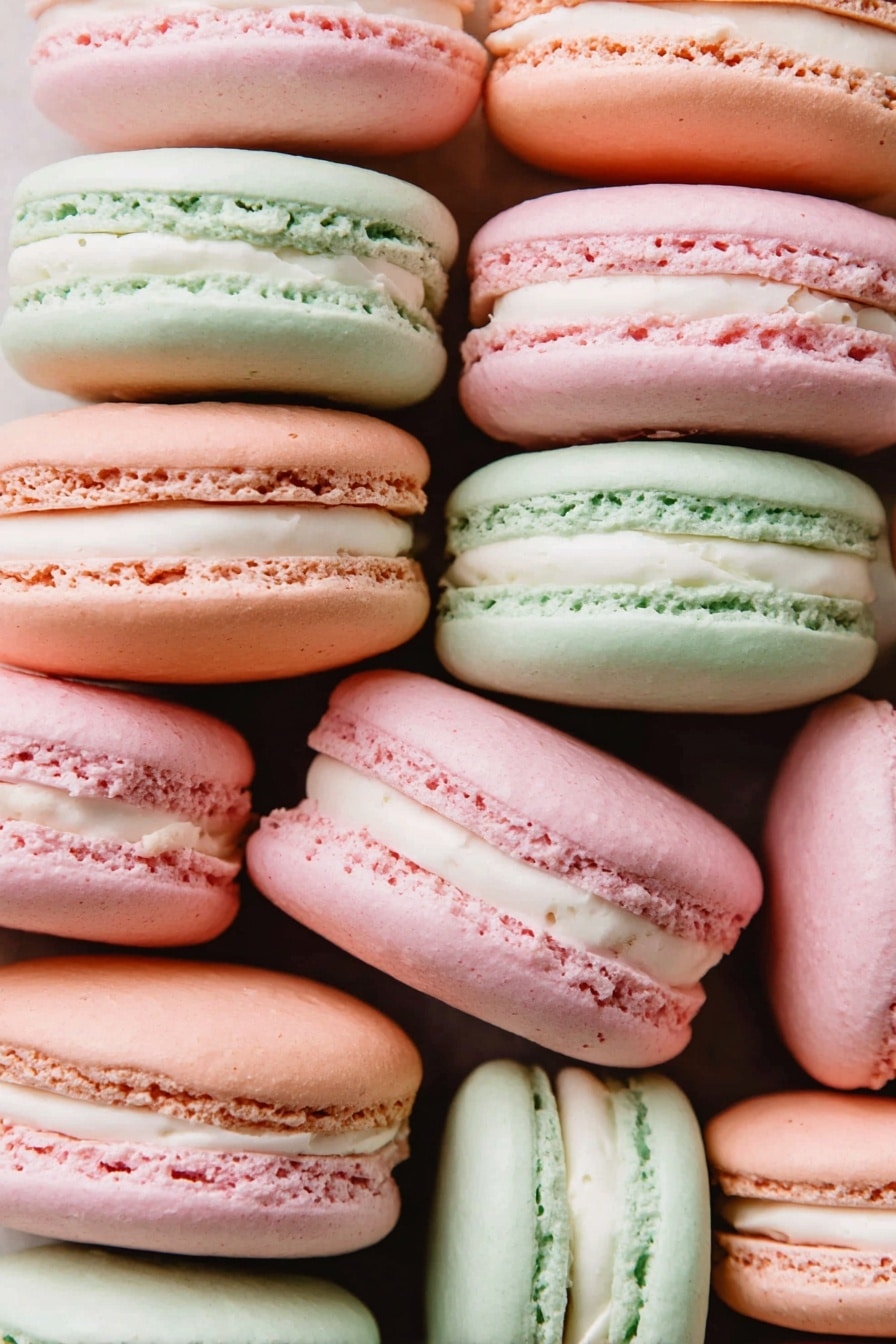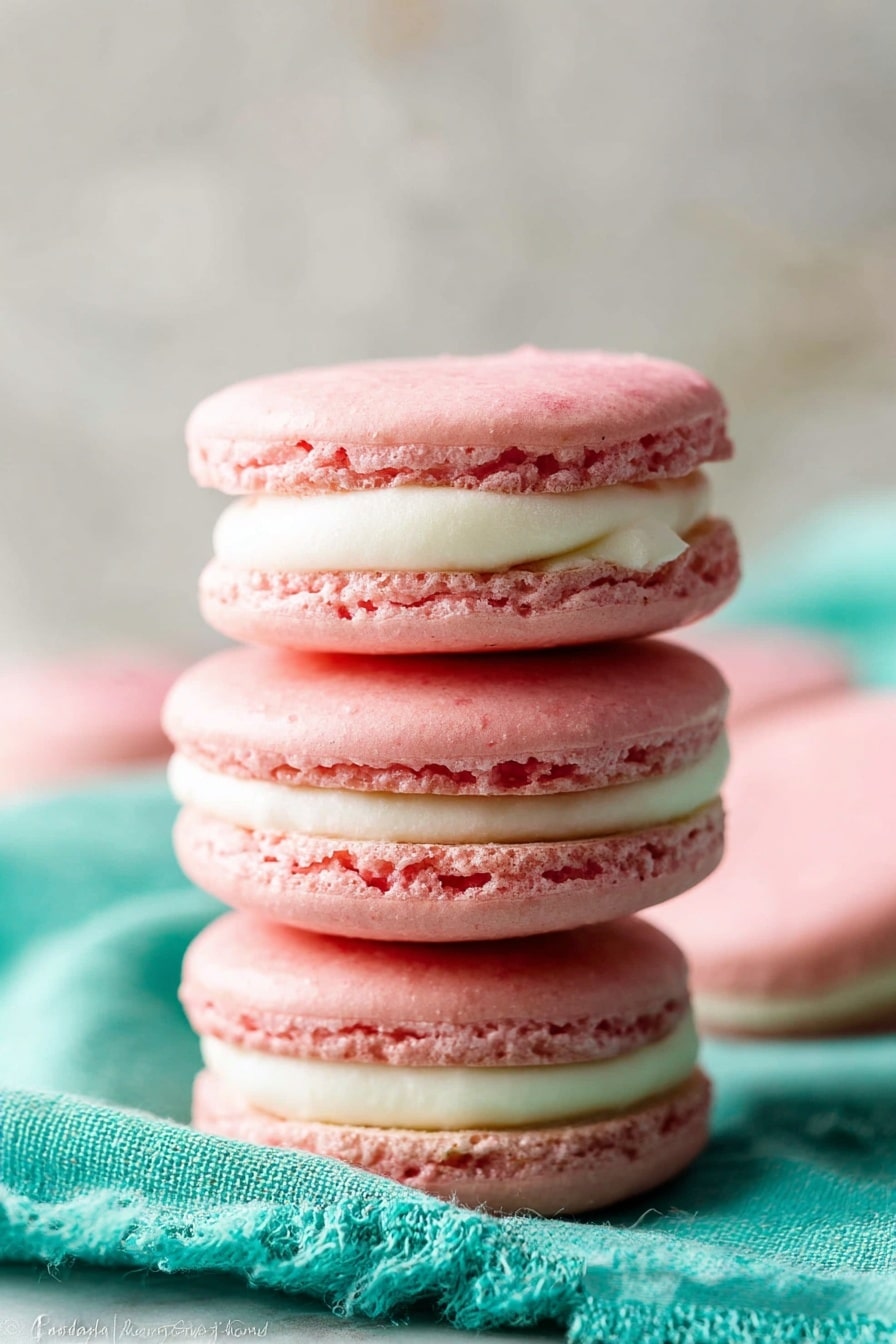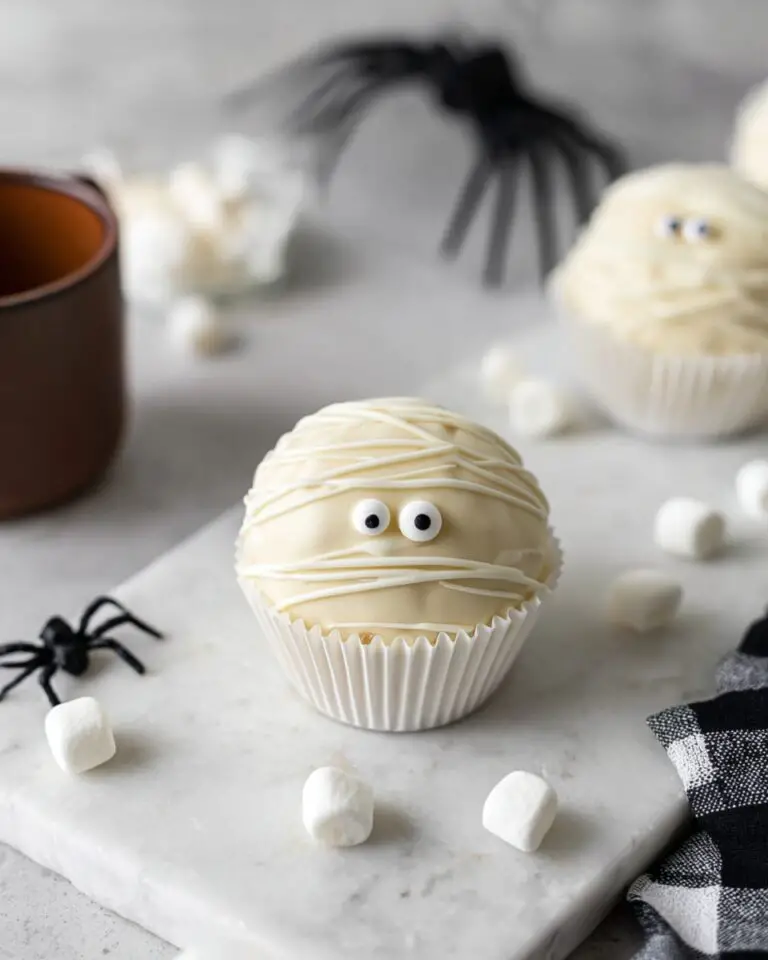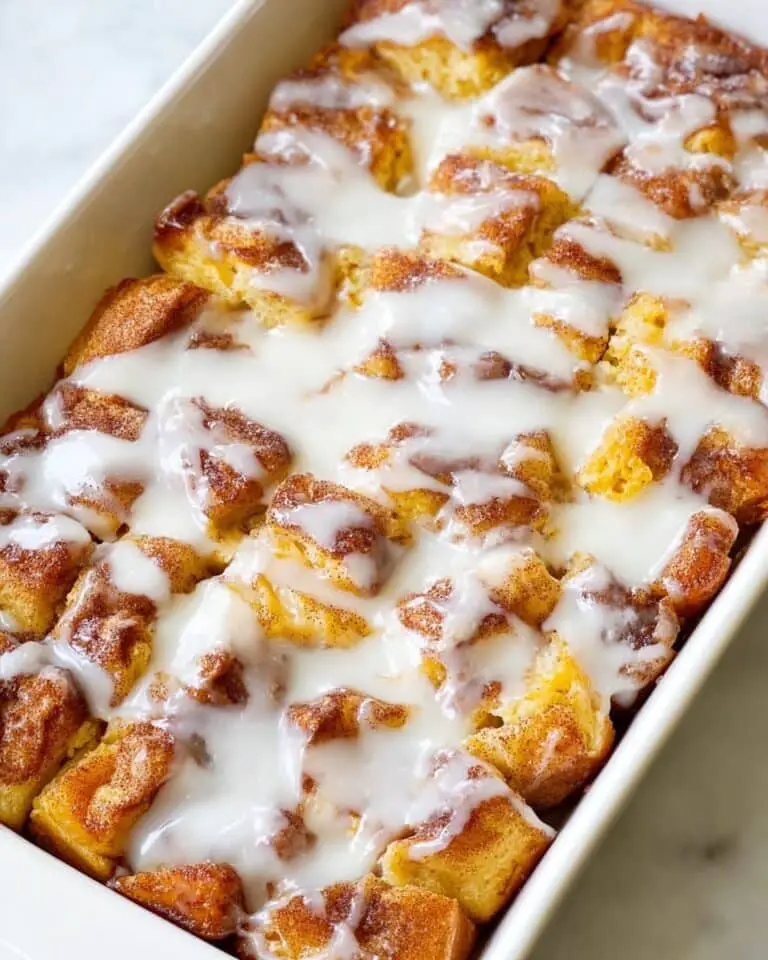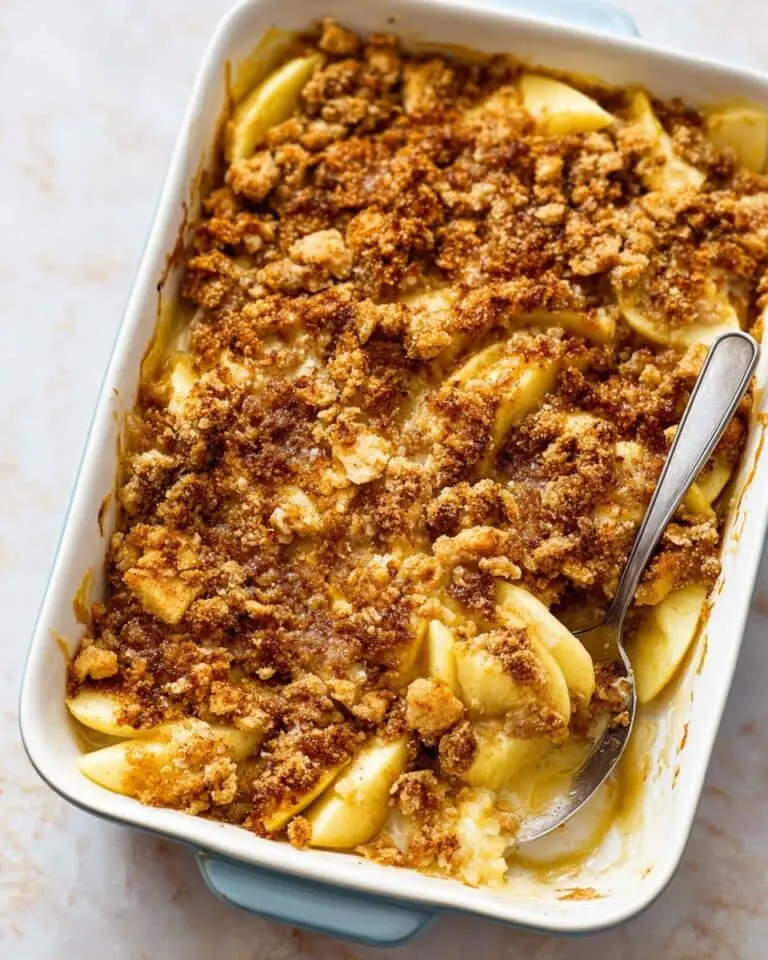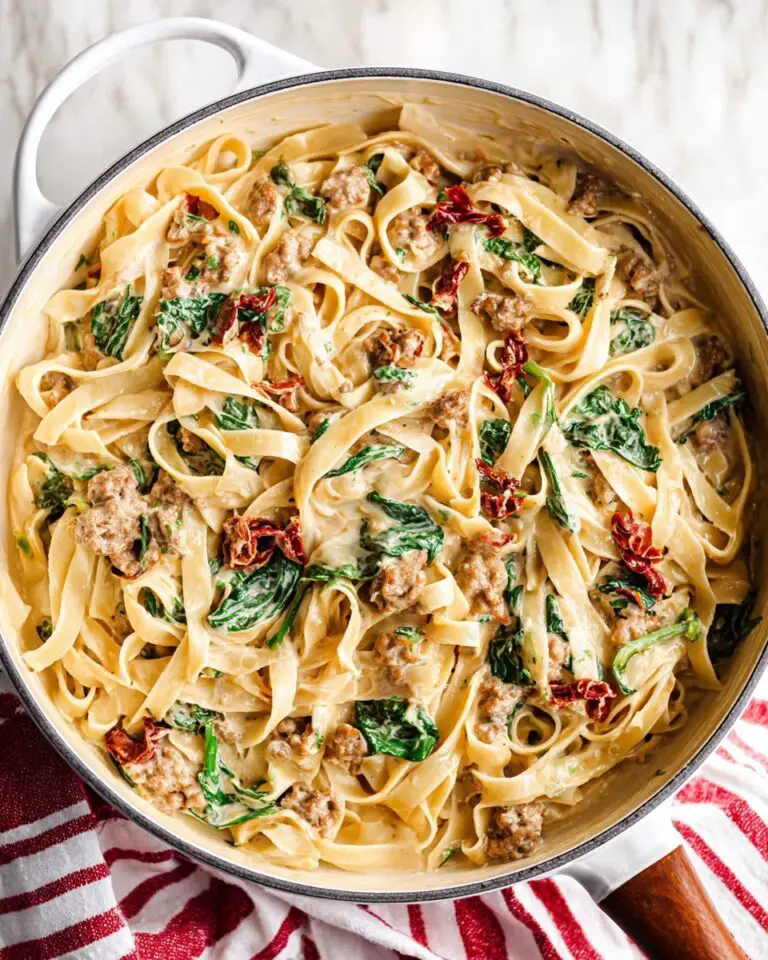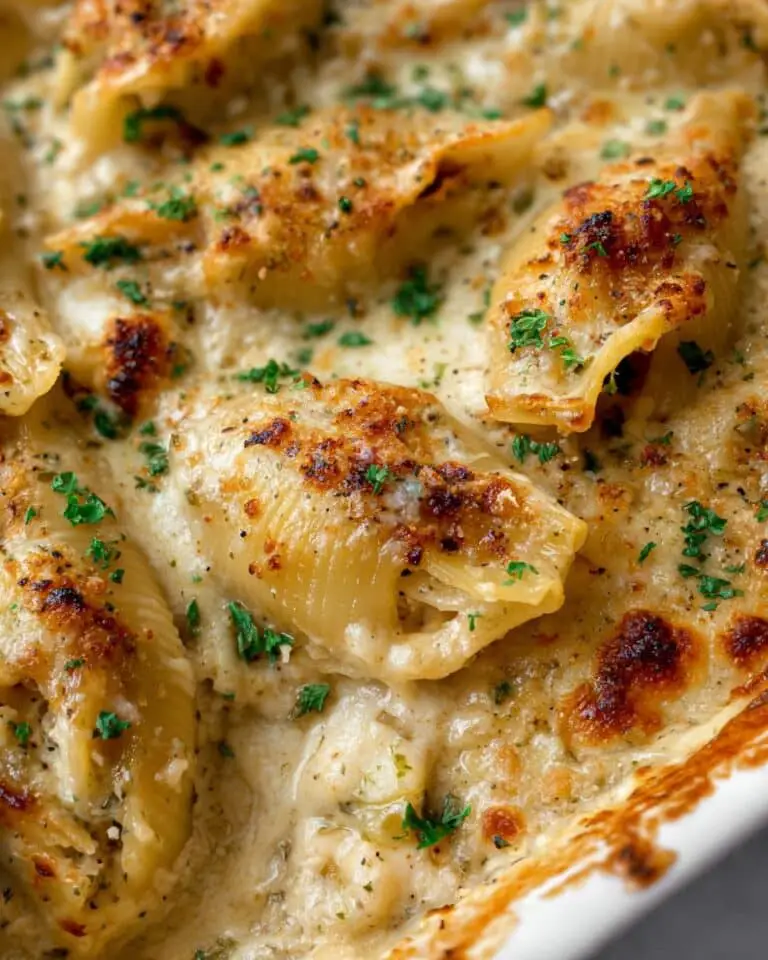If you’ve ever dreamed of mastering the delicate art of macarons, you’re in for a treat! I’m excited to share my tried-and-true French Macarons Recipe that’s both approachable and irresistibly delicious. These airy, crisp yet chewy little treats can be a bit of a challenge, but with my tips and this recipe, you’ll find yourself nailing them like a pro in no time. Trust me, once you try these, your family and friends will be begging you for more.
Why You’ll Love This Recipe
- Authentic Texture: Achieve that perfectly crisp shell with a chewy interior every single time.
- Flavor Flexibility: Customize fillings and coloring to suit your mood or season.
- Step-By-Step Guidance: Breaks down every step with practical advice to avoid common macaron mistakes.
- Impress Your Guests: These elegant treats will have your friends thinking you’re a pastry chef.
Ingredients You’ll Need
Each ingredient plays a crucial role in creating those light, glossy shells we all love. I’ve included some tips so you know why each one matters and how to pick the best versions.
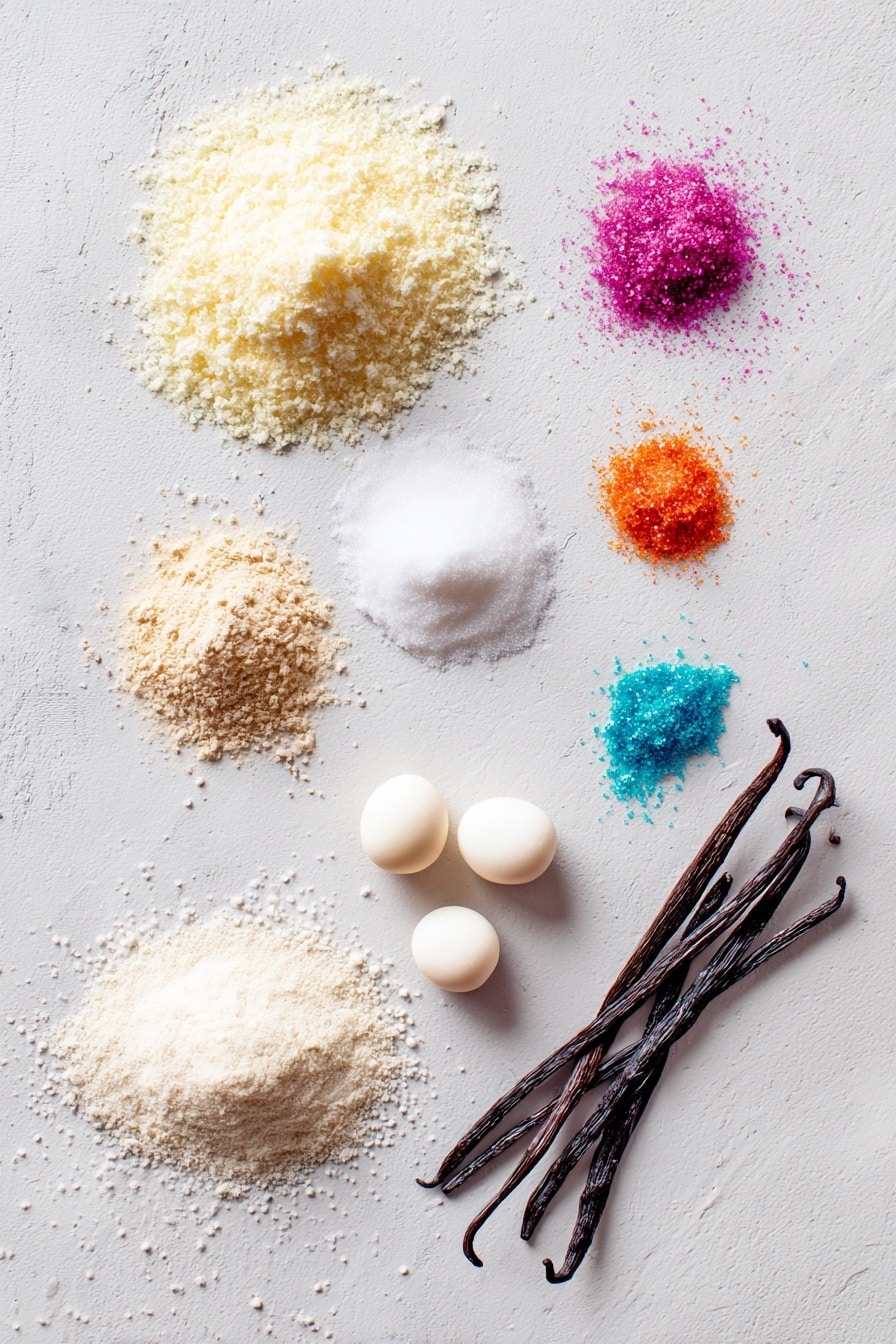
- Egg Whites: Use large eggs and separate them carefully; aged and brought to room temperature helps with volume and stability.
- Cream of Tartar: This stabilizes your egg whites to give them strength and a smooth texture.
- Extract (Vanilla, Almond, etc.): Optional, but I love adding a splash for subtle, natural flavor depth.
- Superfine Sugar (Caster Sugar): Dissolves easily for that smooth, shiny meringue; regular granulated sugar might make your shells grainy.
- Gel Food Coloring: Totally optional but a fun way to get those vibrant macaron colors without affecting texture.
- Almond Flour: Make sure it’s finely ground and fresh for the best texture and flavor.
- Confectioners’ Sugar: Helps sweeten and smooth the batter while contributing to the delicate crumb.
- Macaron Filling: From buttercream to ganache, the sky’s the limit! I’ll share some favorite fillings down below.
Variations
One of the best parts about this French Macarons Recipe is how versatile it is. I love playing around with different flavors and colors to match the occasion or my mood. Feel free to get creative—this recipe is your canvas!
- Flavored Extracts: Lavender or rose extract give a lovely, subtle floral note. My go-to mood lifter for springtime macarons!
- Filling Ideas: I’ve tried everything from classic vanilla buttercream to rich chocolate ganache, and even fruit jams like raspberry—it all works beautifully.
- Diet-Friendly Variations: Swap filling for dairy-free options like coconut cream or nut butters for those avoiding dairy.
- Color Swaps: Skip food coloring for a natural off-white or use natural powders like matcha for green or beetroot for pink.
How to Make French Macarons Recipe
Step 1: Prep Your Egg Whites the Right Way
This might sound unusual, but wiping your mixing bowl with lemon juice or vinegar before adding the egg whites helps ensure an ultra-clean, grease-free surface—key for perfect meringue. After that, refrigerate the whites covered for 24 hours, which helps dry them out and build better volume when whipped. I learned this trick accidentally when I forgot the egg whites overnight, and it actually led to my most stable meringue ever!
Step 2: Whip Your Meringue Just Right
Beat your egg whites with cream of tartar on medium speed until soft peaks form—you’ll see foamy bubbles begin to tighten, and your beaters will start leaving trails. Then add superfine sugar in three parts, beating briefly between additions, until you get stiff, glossy peaks that don’t droop when you lift the whisk. Remember, stiff peaks mean your meringue should hold a sharp point and stay put even if you turn the bowl upside down. This step can be tricky, but patience here pays off.
Step 3: Fold in Dry Ingredients with Care
Sift almond flour and confectioners’ sugar together to avoid lumps, then gently fold a third of your meringue into this mixture. Repeat in batches. The challenge here is achieving the perfect batter consistency—think honey-thick but still flowing. The “figure 8 test” is your best friend: drop some batter off your spatula in the shape of an 8, and it should smooth out within 10 seconds. If it sinks right away, your batter is overmixed. If it doesn’t, you need to fold a bit more. Getting this balance right is what really sets your macarons apart.
Step 4: Pipe and Rest Before Baking
Transfer batter to a piping bag fitted with a medium round tip and pipe 1.5 to 2-inch rounds on lined baking sheets. It helps to bang the pans gently on the counter a couple of times to pop any lingering air bubbles—using a toothpick to release stubborn ones too. Now the hard part: let your macarons rest until the tops feel dry and not sticky—usually between 30-60 minutes. This skin forms the signature feet during baking. Don’t skip this rest, or you might end up with cracked shells.
Step 5: Bake to Perfection
Preheat your oven to 325°F (163°C). Bake the macarons for 13 minutes, checking near the end to make sure the shells don’t wobble when gently touched. If they do, give them a couple more minutes. Cooling is just as important: let them sit on the baking sheet for 15 minutes before transferring to a wire rack. This helps prevent shells from sticking and cracking.
Step 6: Fill and Enjoy
Once your macaron shells are cool, it’s filling time! I usually fill them with buttercream or chocolate ganache—just pipe or spread your chosen filling on the flat side and sandwich two shells together. You can enjoy them right away, but I also love letting them mature in the fridge for 12-24 hours to deepen the flavor and soften the shells slightly.
Pro Tips for Making French Macarons Recipe
- Aged Egg Whites: Refrigerate whites for a day to make beating easier and meringue stronger.
- Slow and Gentle Folding: Overmixing can ruin the batter, so fold carefully and watch that figure 8 test like a hawk.
- Resting Time is Crucial: Don’t skip drying the piped shells before baking—it’s the secret to those perfect feet!
- Temperature Matters: Every oven is different; adjust timing if shells crack or don’t develop feet.
How to Serve French Macarons Recipe
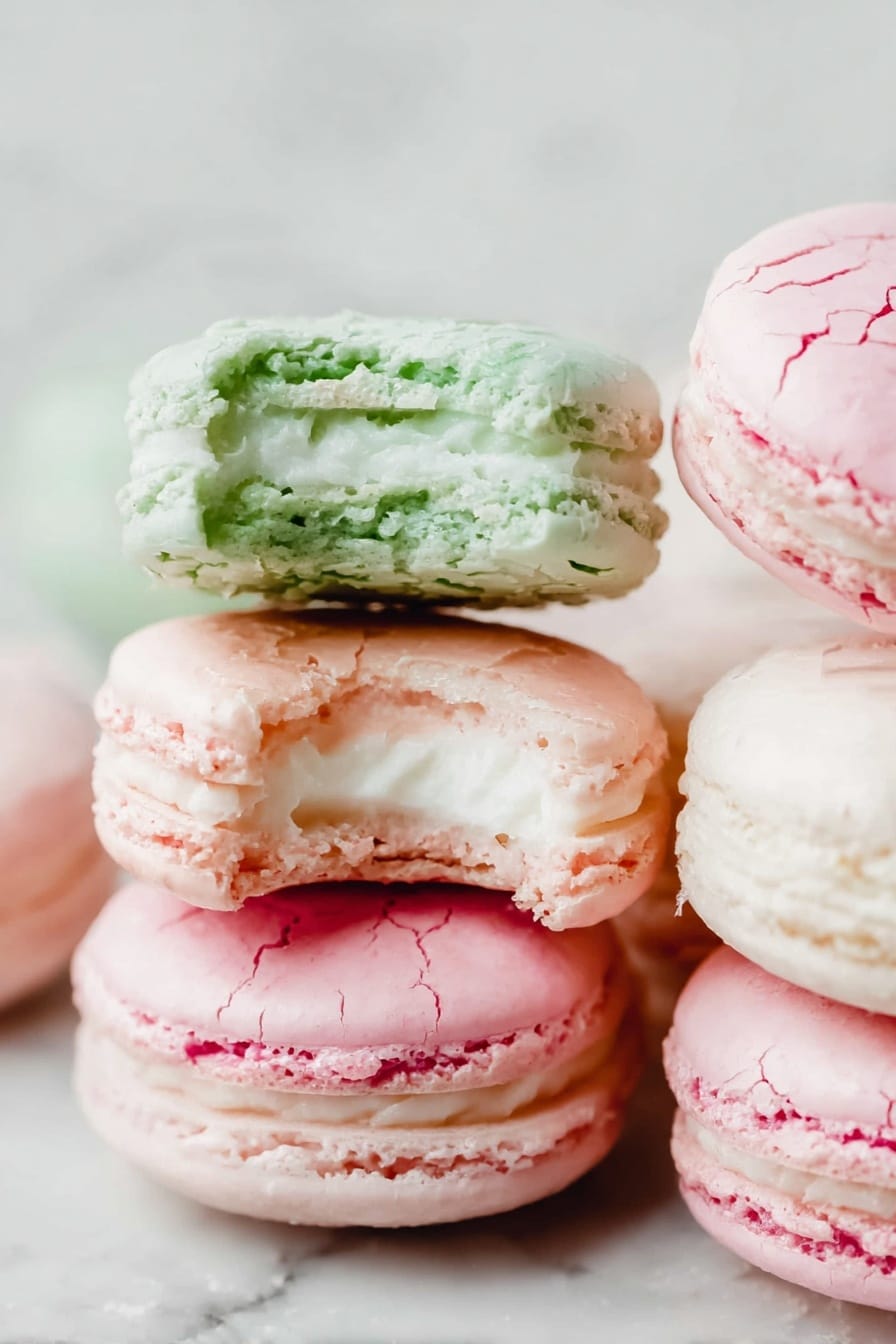
Garnishes
I usually keep the presentation simple with a light dusting of powdered sugar or a thin drizzle of melted chocolate for a fancy touch. Fresh edible flowers on the serving plate can make your macarons look gorgeous, especially for a tea party or shower.
Side Dishes
Pair your macarons with a cup of Earl Grey tea or a light coffee—the slight bitterness offsets the sweetness beautifully. For something cooler, champagne or a light sparkling wine elevates them for celebrations.
Creative Ways to Present
I’ve made beautiful macaron towers for birthdays and weddings using tiered stands. For holiday gift bundles, I package them in pastel boxes with ribbons—they’re a guaranteed crowd-pleaser and look like a million bucks but come together in your own kitchen!
Make Ahead and Storage
Storing Leftovers
I store leftover macarons in an airtight container in the fridge. They keep well for about 5 days and don’t lose their texture or flavor. Just remember to bring them to room temperature before serving for the best taste and chewiness.
Freezing
Freeze assembled macarons by layering them in airtight containers with parchment paper in between each layer. I’ve found they freeze beautifully for up to a month. Just thaw in the fridge overnight before enjoying.
Reheating
You don’t want to heat macarons too much, or you risk melting the filling. I usually bring them to room temperature and, if needed, pop them in a 300°F (150°C) oven for just 2-3 minutes to freshen the shell’s crispness without softening the filling.
FAQs
-
Can I use regular sugar instead of superfine sugar for macarons?
While superfine sugar dissolves quickly to create a smooth meringue, using regular granulated sugar may cause a grainy texture and prevent the egg whites from whipping properly. If you don’t have superfine sugar, you can pulse regular sugar in a food processor a few times to make it finer.
-
How do I know when the macaron batter is properly mixed?
The best way is the “figure 8 test”: drop the batter from your spatula in the shape of a figure 8 and time how long it takes to settle back into the batter. It should smooth out in about 10 seconds. If it’s faster, your batter is overmixed; if it takes longer, fold a bit more.
-
Why do my macarons crack or have no feet?
This usually means the batter was either too wet or the resting time was skipped. Allow the piped shells to dry thoroughly before baking to form a skin, and make sure not to overmix the batter so it holds enough air to rise and form feet.
-
Can I make French macarons without a kitchen scale?
I highly recommend using a kitchen scale for accuracy because macarons require precise measurements. However, if you don’t have one, try to use the most accurate measuring cups and spoons possible and be consistent, but just know that results may vary.
-
How long should I bake macarons?
Bake at 325°F (163°C) for about 13 minutes. If the shells wobble when lightly touched, bake 1-2 minutes more. They’re done when they’re firm on top and easily peel off the parchment without cracking.
Final Thoughts
This French Macarons Recipe has truly become one of my proudest kitchen accomplishments. I remember the first time I got those perfect “feet” and smooth shells—it felt like a mini celebration! It can be a bit intimidating at first, but with patience and the tips I’ve shared, you’ll get the hang of it, and your macarons will turn out beautifully every time. So, grab your piping bag and give it a go—you’re about to wow yourself and everyone who tries these delicate little jewels.
Print
French Macarons Recipe
- Prep Time: 1 hr
- Cook Time: 13 min
- Total Time: 1 hr 30 min
- Yield: About 40 shells; 20 sandwiched macarons
- Category: Dessert
- Method: Baking
- Cuisine: French
- Diet: Gluten Free
Description
This classic French Macarons recipe guides you through making delicate, crisp, and chewy almond meringue cookies perfect for sandwiching with your favorite fillings. The recipe features detailed instructions for preparing the macaron batter, piping perfect rounds, and baking to achieve the signature ruffled feet. Customize with your choice of extracts and food coloring to create irresistibly beautiful and delicious treats.
Ingredients
Macaron Shells
- 100g egg whites (about 3–4 large egg whites)
- 1/4 teaspoon (1g) cream of tartar
- 1/2 teaspoon extract (vanilla, almond, coconut, etc., optional)
- 80g superfine sugar (caster sugar)
- 1–2 drops gel food coloring (optional)
- 125g almond flour
- 125g confectioners’ sugar
Filling
- Desired macaron filling (buttercream, ganache, jam, or other favorite fillings)
Instructions
- Prepare Egg Whites: Wipe a large glass or metal mixing bowl with lemon juice or vinegar. Add egg whites, cover, and refrigerate for 24 hours. Bring to room temperature before using.
- Prep Baking Sheets: Line 3 large baking sheets with silicone baking mats or parchment paper; set aside.
- Beat Egg Whites: Add cream of tartar and extract (if using) to egg whites. Beat with a mixer on medium speed until soft peaks form. Gradually add superfine sugar in thirds, beating on medium-high until stiff, glossy peaks form. Fold in gel food coloring gently if using.
- Sift Dry Ingredients: Sift almond flour and confectioners’ sugar together to remove lumps. Use a spoon to help push through any larger pieces.
- Fold Batter: Slowly fold the beaten egg whites into the almond flour mixture in three additions. Continue folding until the batter reaches a honey-like consistency. Use the figure 8 test—batter should take 10 seconds to flatten.
- Piping: Transfer batter into a piping bag fitted with a medium round tip. Pipe 1.5 to 2-inch rounds spaced 1-2 inches apart onto prepared sheets. Tap the baking sheets on the counter to release air bubbles and pop any bubbles with a toothpick.
- Dry Macarons: Let piped shells sit at room temperature for 30–60 minutes until dry and no longer tacky on top to form a skin.
- Preheat Oven: Preheat oven to 325°F (163°C).
- Bake: Bake for 13 minutes, checking doneness by gently touching the shells—if they don’t wobble, they are done. Add a minute or two if needed.
- Cool: Cool shells on the baking sheet for 15 minutes before transferring to a wire rack to cool completely.
- Fill and Assemble: Spread or pipe your choice of fillings onto one shell and sandwich with another.
- Rest (Optional): For best flavor, refrigerate assembled macarons for 12–24 hours and bring to room temperature before serving.
- Storage: Store leftover macarons covered in the refrigerator for up to 5 days.
Notes
- Use precise gram measurements for best results, especially for the almond flour and sugars.
- Egg whites aged in the fridge for 24 hours improve meringue stability.
- Handle batter gently to avoid overmixing or undermixing—consistency is key.
- Experiment with flavors and colors by using different extracts and gel food colorings.
- Fillings can include buttercream, ganache, jam, or curd for variety.
- Allowing shells to dry properly before baking helps develop the iconic feet.
- Macarons improve in texture and flavor after resting in the fridge for up to 24 hours.
Nutrition
- Serving Size: 1 sandwich macaron (about 12g)
- Calories: 70
- Sugar: 9g
- Sodium: 3mg
- Fat: 3g
- Saturated Fat: 0.2g
- Unsaturated Fat: 2.7g
- Trans Fat: 0g
- Carbohydrates: 9g
- Fiber: 1g
- Protein: 2g
- Cholesterol: 0mg

